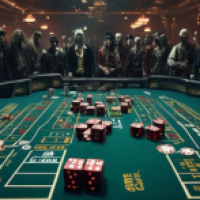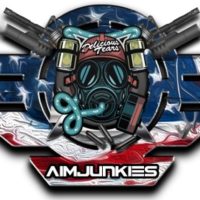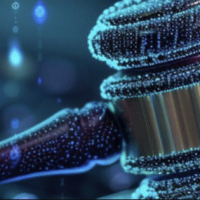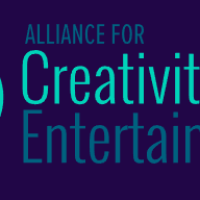At a time when attacks against queer and Jewish identities are often trending on Twitter, I find myself wanting to dive deep and spend book-long time with these stories, digesting them, letting them into my DNA, allowing them to help me articulate my identity and my avenue through the world.
What is a Jewish book? What is a queer book? What is a woman’s book? Does the protagonist have to be searching for or struggling with their identity? Is there some uber-Jewishness that comes out in a narrative or a tell that signifies that something is a queer book? It’s like the what’s something that’s not Jewish but feels Jewish TikToks. Naturally, there is overlap with Jewish and queer identities and women’s identities and other identities that often find themselves scribbled in the marginalia and not as protagonists.
My short story collection As If She Had a Say uses absurdism to examine the societal roles we’re forced into based on our identities. Though I did not set out to do so, I write about abuse of women frequently. It is a recurring theme in my book. In fact, the first sentence of the first story is, “What is your gender?” My gender as a woman means I’ve been subordinated without me having a say.
Below are books by Jewish authors, like me, who grapple with the crossroads of identity and gender:
To Be a Man by Nicole Krauss
The title of Nicole Krauss’s short story collection says it all, really: what is it to be a man in this world? For Krauss, and for anyone else who isn’t a man, it can only be left to the imagination and she’s done so deftly in this collection.
Many stories include women who have separated from husbands, are single, spinsters, mothers. A woman on her own was once practically a heresy. In the book, she talks of the “quiet euphoria” of no longer being with a man – for even this realization, should be a quiet one. It would be unladylike to exalt it from rooftops.
The collection is also alive in Jewish identity. “Because I was a Jew, and there was no room left to be anything else…” The idea that one’s Jewish identity is to be the overarching identity, is a question many Jews grapple with (this is, of course, not exclusive to Jews). I am often faced with the question: “what are you? No, but what are you really? I typically respond: First, I am a Jew, then… But this will not be the same for everyone, and To Be a Man makes the reader question prioritization of identity and whether it’s even necessary to rank, when so many of us live at intersections of many different identities.
In Zusya on the Roof, you can imagine being told by an old Jewish man on the upper west side, talking of body ailments and in a cadence that could be from either Fiddler on the Roof and/or Seinfeld. Storytelling is an integral part of Jewish identity, when historically often, Jews escaped only with their bodies and their stories.
Anyone reading – Jew or not – will understand that one of the tells of identity is language, and not only what language, but how one uses that language.
Take What You Need by Idra Novey
In Novey’s newest novel, Take What You Need, Leah is a city-dweller returning to her rural childhood home in rural Pennsylvania. We follow Leah’s storyline as mother, daughter, country mouse-turned-urbanite, Jew. But the star of the story, to me, is Jean. Leah’s stepmother is an artist and welds metal into monstrous contraptions that literally take up too much space in her small home. Her house becomes a gallery of metal and danger, of upending expectations.
Jews in the United States tend to congregate in and near cities. There are many reasons for this, and a lack of welcome in rural areas that are mostly populated by Christians, is one of them. Therefore there isn’t much by way of stories about rural American Jews. Jewish identity seems to be comingled with an urban one. Novey shows us otherwise. In a brilliant and propulsive read, Take What You Need depicts a not-often seen Jewish identity, one that isn’t less real than its Jewish urban identity counterpart.
Novey does not tell this story in a typical person-stands-out-like-a-sore-thumb way. The characters live a natural life with the beauty and challenges of being Jewish in Appalachia.
An Unkindness of Ghosts by Rivers Solomon
In An Unkindness of Ghosts, Solomon, a Black, queer, Jewish writer gives us Aster, a queer- neuroatypical character in this sci-fi meets literary novel. Identity is central to the story. Aster lives aboard a spaceship, where the landscape is familiar. It is based on a plantation-like system of lowdeckers and upperdeckers, organized on lines of whiteness and religion, something that mirrors how whiteness and Christianity go hand in hand in our world.
On the HSS Matilda, Aster is an outsider among outsiders; she’s called an ogre and a freak. Her gender is a bit ambiguous. (Solomon has given her she/her pronouns.) “Tarlander bodies did not always present as clearly male and female as the Guard supposed they ought.”
Aster discovers the power source of the ship is compromised, reads through her late mother’s diaries to learn how to help the ship and help herself. Help her come into her own regarding her identity at all its intersections: queerness, gender, religion, race, neuro-ability.
In the podcast, The Deviant’s World, Solomon says “That’s how she came off the page and came out of my brain. I’m trying to write myself into books, into the cultural landscapes.”
Endpapers by Jennifer Savran Kelly
In Savran Kelly’s Endpapers, it is 2003 and artist Dawn Levit discovers a torn-off cover of a 1950s lesbian pulp novel. On the front is a campy illustration of a woman looking into a handheld mirror and seeing a man’s face and on the back is a love letter. This comes at a time when Dawn is questioning her own gender identity. As Dawn searches for the letter’s author, she is also looking for herself. When she meets the letter writer, Gertrude, a Jewish and queer Holocaust survivor, Dawn is able to put together pieces of her own identity. These are intersecting identities that we don’t often think about, but they are and were present during WWII, and deserve to be told.
Savran Kelly, gives us a nesting doll of identities: Dawn as an artist, as someone who is nonbinary before the term was widely used, and as a Jew. Gertrude as a closeted lesbian, an old woman, a Jew, a Holocaust survivor.
In an interview between me and the author at The Rumpus, Savran Kelly says “As a person who’s queer and presents as female, I’ve spent my life trying to get comfortable taking up space. Art has been the arena in which I’ve been able to do it most successfully.”
Paper Is White by Hilary Zaid
In Paper is White, gay marriage is not yet legal. Zaid places her protagonist, Ellen in the midst of this time. Ellen decides she wants to move forward anyway to marry Francine. Her role as bride, Jew, and lesbian all factor into her experiences throughout the novel. How these identities are fraught and how they dovetail.
Through her job recording the testimony of Holocaust survivors, Ellen becomes close with one survivor, Anya. A common and powerful recurring theme in many Jewish books are modern characters connecting with Jews who have firsthand experience with the Holocaust. This is so powerful, because it’s rather easy to become complacent in our comparative safety today in the United States. How can a genocide within living memory not factor into one’s identity?
The Jewish community as a whole, like many others, has not always been very welcoming of queerness. It still has a lot of work to do and some communities are better at it than others. This is another aspect of identity; when they’re at odds – do you have to choose? Do you have to prioritize one identity over the other?
Sarahland by Sam Cohen
Cohen’s collection uses voice, pop culture, humor and intellect to construct and then destruct expectations around Jewish identities. All the protagonists are Sarahs, which probably not coincidentally, is basically the foremother of Jews, the Ur-woman, if you will.
In addition to using famous Sarahs (Silverman, Jessica Parker, Michelle Geller), Cohen gets at the Sarah-archetype: the Jewish American Princess.
I have witnessed the flat-ironing of ethnic curls and seen many birdlike Sarahs subsist on I Can’t Believe it’s Not Butter spray. I have intimately, life-shapingly experienced the bully-end of this certain subset of Sarahs at camp and in college. I had yet to really see this Jewish archetype in literature and the familiarity and humor (whereas in the past, for me, it was familiarity and fear) is something I absolutely loved about Sarahland. Beyond that, Cohen adds a queer element, something held deeply closeted, albeit in a fashionable and expensive closet, among these girls and later women. In those circles, queerness is whispered like the word cancer. In fact, I remember clearly when I was sixteen and someone once whisperer-asked me “are you, are you a…lesbian? <insert horrified expression here.>”
I was absolutely delighted – and there was a sense of relief – to read this mashup of these particular identities and handled in such a deft way. The book is funny. But it’s layered with the nuance of having to hide identities, of being in a pressure cooker of homogeneity, of being a woman, and the pain that is often pushed down along with those things.
As Cohen says in an interview with Split Lip Magazine, “I knew very early on writing “Sarahland” that it was a story about the ways girls are raised to surrender their agency at every turn, about the way some girls start to actually think of their bodies as public property.”
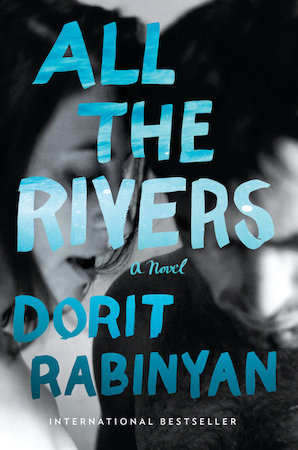
All the Rivers by Dorit Rabinyan
Dorit Rabinyan is a Iranian Israeli Jew. In the novel All the Rivers, she’s written a literary love story between Iranian Israeli grad student, Liat, and Palestinian artist, Hilmi in New York City. Bringing them together initially is the identity of being an immigrant in the United States, one where, if you are of certain descent or look a certain way, you are never fully welcome to the table.
And, of course, it’s been controversial, a love story between an Israeli and a Palestinian.
All the Rivers was banned by Israel’s Minister of Education, Naftali Bennett. Rabinyan says in an essay for Time, “The book tries to address the Jewish fear of losing our identity in the Middle East. And yet that very fear condemned it to official rejection.”
Where does our identity come from and who defines it? I think the only way for us to even begin to form the answers to this question is to read about those relationships, to read about the people living it and from the people living it. Our identities do not exist in a silo, and this book offers an opportunity to parse and reconcile our Jewish identity with what’s happening in the world outside our own.
The Archivists by Daphne Kalotay
Identity is self-formed, environmentally-formed, and pre-determined. In Kalotay’s titular story, she talks of epigenetics in Holocaust survivors. The trauma in one’s DNA. This identity is one made up in your bodily threads. If that’s the case, can you shirk this identity?
While talking of a dance, but metaphorically more, “Dances long forgotten…will exist once again, recalled, performed, and shared into perpetuity.” Can you forge an identity entirely free of genetically determined factors? Surely you can build upon it.
In one story, Three Times Two, in the mountains of Germany, amidst a bevy of named characters who each get a background, a voice, choices, an innkeeper’s wife cleans up in the background, getting things done invisibly, as women do. Later, she is named “nervous wife.” She never gets a name, constantly keeping up the setting invisibly, as is a woman’s work. Throughout The Archivist, we are given women doing women’s work and then shucking that suffocating blanket.
In Other Lifetimes All I’ve Lost Comes Back to Me by Courtney Sender
As we know and see in many of the books listed here, a large part of identity is often formed from things passed down through generations. This can be via DNA, family lore, or via material possessions. Living in a world created by those who came before us, we are always walking on the desire lines of others. Using humor to talk about Jewish trauma, Courtney Sender sets several stories in WWII concentration camps. Her own grandparents were Holocaust survivors and undoubtedly this identity has imprinted on the author.
Womanhood and Jewish identity are side-by-side and intertwined throughout Sender’s excellent collection. Menstruation is a recurrence throughout, arguably, one of the most definitive aspects of womanhood. In one story, To Do With the Body, we see a museum of period-stained clothing. In real life, this is something we both never see – those stained belongings must be hidden away – and also something almost everyone who has menstruated recognizes immediately.
For women imprisoned in camps, they both had to contend with forced labor and genocide as well as the everyday occurrence of getting their period (at least until their bodies stopped menstruating due to malnutrition and disease). As her narrator says in her titular story, while imagining the possibility of her past loves returning to her, taking her on varying paths in life: “In all worlds I’d have stayed Jewish, and a daughter, and a writer.”
The post 9 Books About Identity and Gender by Jewish Women and Nonbinary Writers appeared first on Electric Literature.
Source : 9 Books About Identity and Gender by Jewish Women and Nonbinary Writers





